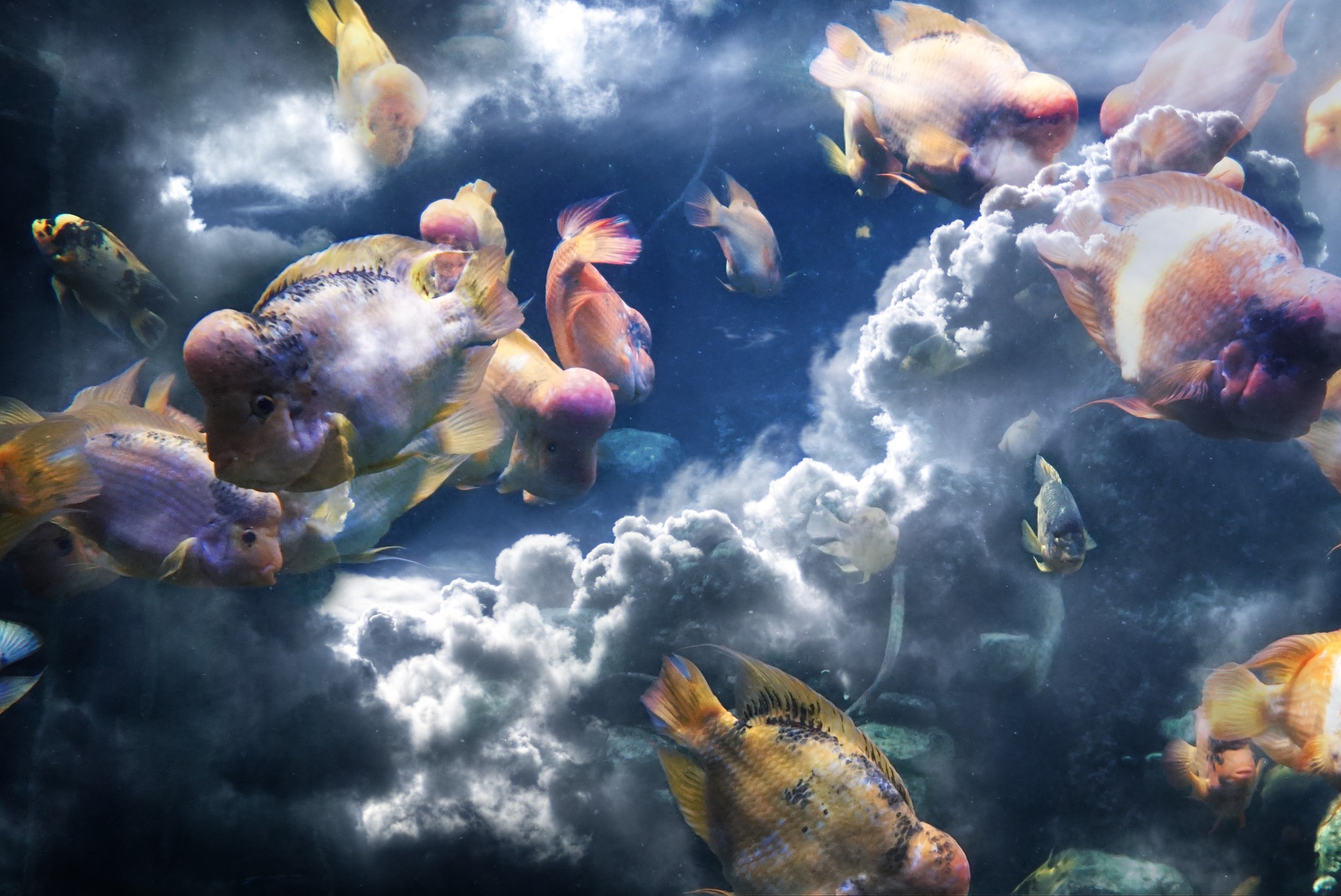“When an inner situation is not made conscious, it happens outside, as fate.” —Carl Gustav Jung
Once upon a time there lived, on the bank of a stream, a man and a woman who had a daughter. As she was an only child, and very pretty besides, they never could make up their minds to punish her for her faults or to teach her nice manners; and as for work—she laughed in her mother’s face if she asked her to help cook the dinner or to wash the plates. All the girl would do was to spend her days in dancing and playing with her friends; and for any use she was to her parents they might as well have no daughter at all.1
So begins the seldom-seen fairy tale “The Girl-Fish,” ascribed to Madame d’Aulnoy—noted French aristocrat, writer, and coiner of the phrase contes de fees (“fairy tales”)—and published by Andrew Lang in The Orange Fairy Book (1906). Of the many fish fairy tales throughout the world, this one swims right to the point: the creature is the envoy of fate.
The heroine is reachable despite her poor temperament, for in the second paragraph she sees how tired and troubled her mother is, regrets her tone, and mends the fishing net to make up for it. The moment she is done, a fish appears at the water’s edge and she captures it, thrilled at having caught something wonderful for dinner. But the fish says, “You had better not kill me, for, if you do, I will turn you into a fish yourself.” Dismissing the threat, the girl takes it home for her mother to cook.
But the instant it touched her mouth a cold shiver ran through her. Her head seemed to flatten, and her eyes to look oddly round the corners; her legs and her arms were stuck to her sides, and she gasped wildly for breath. With a mighty bound she sprang through the window and fell into the river, where she soon felt better, and was able to swim to the sea, which was close by.
The girl-fish is a newly born creature, and, unable to see clearly beneath the waves, she is cared for by a school of fish, some of whom were once human, too. By and by, they go deeper. She sees things she never knew existed:
Wedges of gold, great anchors, heaps of pearl, inestimable stones, unvalued jewels—all scattered in the bottom of the sea! Dead men’s bones were there also, and long white creatures who had never seen the light, for they mostly dwelt in the clefts of rocks where the sun’s rays could not come.
The sea is the womb of all life. To the Greeks it was the kingdom of the dead. According to Anatoly Liberman in “Watered Down Etymologies (Ocean and Sea)”2, “Germanic speakers also believed that life ends in the sea…The Gothic for ‘soul’ is saiwala, and its etymology has been contested as vigorously as the etymology of saiws. Jacob Grimm (whose linguistic theories, Liberman believes, were usually 150 years ahead of his time) believed that saiws and saiwalaare related. The seat of souls. The sea.
The sea also symbolizes the unconscious, particularly the collective unconscious according to the theories of the twentieth century’s groundbreaking psychiatrist and mythologist Carl Gustav Jung. Its surface is more often than not impenetrable; below lies the shadowy contents of our deepest selves. Thoughts rise up, thoughts pass by—like fish. Sometimes peaceful, other times powerful, always present.
Eventually, the girl-fish, though entranced by the wonders of the sea, is worn out from the effort of crossing it. She meets a queen-fish who once was a human queen and who shares with her the story of how a giant stole her crown for his daughter and cast a spell on her husband. The girl-fish agrees to help, and the rest of the tale has her turning herself into a deer, an ant, a monkey, and a parrot while on her quest.
“Psychologically the fish is a distant, inaccessible content of the unconscious, a sum of potential energy loaded with possibilities but with a lack of clarity.”3
The journey outlines the girl-fish’s development—from ambivalent child to mature, hence powerful, woman. Her fate is the result of her unconscious desire—for meaning, strength, balance—floated to her awareness in the guise of the magical fish.
(Cross-posted at Luna Station Quarterly)
Other tales with fishy fates include:
- The ancient Chinese story of Ye Xian, which is said to have appeared more than 1,000 years before any western version of Cinderella
- “The Maiden and the Fish” (Portuguese)
- “The Fish and the Ring” (British)
- The Grimm’s recounting of “The Fisherman and His Wife,” also known as “The Enchanted Fish.”
Image Credit: Alexandra_Koch at Pixabay.com
- Project Gutenberg. “The Girl-Fish,” accessed April 7, 2018, http://www.gutenberg.org/files/3027/3027-h/3027-h.htm#link2H_4_0024
- Liberman, Anatoly. “Watered Down Etymologies (Ocean and Sea),” accessed April 7, 2018, https://blog.oup.com/2009/10/watered-down-etymologies/
- von Franz, Marie-Louise. The Interpretation of Fairy Tales (Boston & London: Shambhala, 1996), 155.

